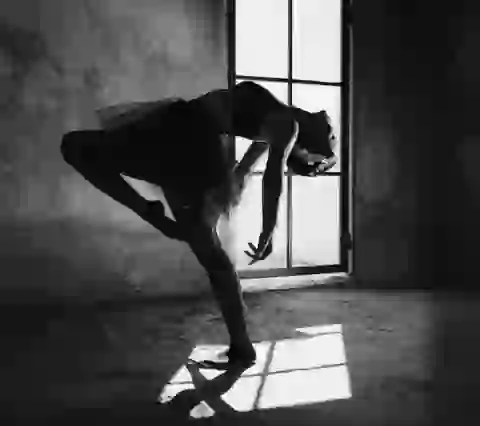Dance enthusiasts, whether seasoned performers or beginners, often find the prospect of creating a choreography routine both thrilling and daunting. Crafting a dance sequence that captivates an audience requires a thoughtful approach and a blend of creativity and technical finesse. In this guide, we’ll break down the 10 essential steps to help you navigate the choreographic process successfully.
Introduction
Dance is more than movement; it’s a storytelling medium that allows artists to convey emotions, themes, and narratives. Choreography, the intentional arrangement of dance steps, plays a pivotal role in transforming movement into a powerful form of expression. In this guide, we’ll walk through the 10 essential steps to create a choreography routine that captivates your audience and leaves a lasting impression.
Step 1: Define Your Purpose
Before diving into the intricacies of choreography, it’s crucial to define the purpose behind your routine. What story do you want to tell? What emotions do you aim to evoke? Understanding the why behind your choreography sets the foundation for a meaningful and impactful performance.
Step 2: Choose the Right Music
Music is the heartbeat of dance, influencing the mood, tempo, and overall feel of your routine. When selecting music for your choreography, consider how it aligns with your purpose. Does it enhance the emotions you want to convey? Choose music that resonates with you and complements the narrative you wish to unfold through your dance.
Step 3: Establish a Theme or Concept
A well-defined theme or concept adds depth and cohesion to your choreography. Whether it’s a story, an emotion, or a visual concept, having a central theme provides a framework for your movements. This theme serves as the guiding thread that ties your routine together, creating a more immersive experience for both dancers and viewers.

Step 4: Plan Your Movements
Once you have a purpose, music, and theme in mind, it’s time to plan your movements. Break down the routine into individual steps, ensuring a balance between variety and coherence. Consider the dynamics of each movement and how they contribute to the overall flow of the choreography.
Step 5: Consider the Dance Space
The space in which you perform greatly influences your choreography. Be mindful of the size and layout of the performance area. Adapt your routine to different spaces, ensuring that your movements are well-suited to the performance environment. This adaptability adds versatility to your choreographic skill set.
Step 6: Focus on Transitions
Seamless transitions between movements elevate the quality of your choreography. Pay attention to the spaces between steps, ensuring that each transition is fluid and purposeful. Think of transitions as the glue that binds your movements together, creating a continuous and visually appealing dance sequence.
Step 7: Collaborate and Seek Feedback
Choreography is often a collaborative effort. Don’t hesitate to collaborate with other dancers or seek feedback from choreographers. A fresh perspective can offer valuable insights and enhance the overall quality of your routine. Embrace constructive criticism as a means of refinement.
Step 8: Rehearse Regularly
Consistent rehearsals are the backbone of a well-executed choreography routine. Establish a regular rehearsal schedule, and ensure that all dancers are committed to the practice sessions. Regular rehearsals not only polish the routine but also build a sense of cohesion and camaraderie among the dance team.
Step 9: Refine and Revise
Choreography is an iterative process. Don’t be afraid to refine and revise your routine as you go. Experiment with different movements, transitions, and expressions. Be open to changes that enhance the overall impact of your choreography.
Step 10: Add Personal Flair
While adhering to the choreography is essential, don’t forget to inject your personal flair. Your unique style and expression make the routine distinctly yours. Balance between following the choreography and infusing your individuality into the performance.
Common Mistakes to Avoid
In the excitement of creating a choreography routine, it’s easy to fall into common pitfalls. Avoid these mistakes to ensure a smoother choreographic process:
- Overcomplicating movements
- Ignoring the importance of storytelling
- Neglecting to adapt to different performance spaces
- Rushing the rehearsal process
Benefits of a Well-Crafted Choreography Routine
Investing time in crafting a well-thought-out choreography routine offers numerous benefits:
- Enhanced expression of emotions and themes
- Improved teamwork and collaboration among dancers
- Memorable and impactful performances that resonate with audiences
Showcasing Success Stories
To inspire your choreography journey, let’s explore a few success stories from the dance world. These individuals or groups have mastered the art
Conclusion
In conclusion, creating a choreography routine is a journey that requires creativity, dedication, and a deep connection to the art of dance. By following these 10 essential steps, you can embark on this journey with confidence, whether you’re a seasoned choreographer or a beginner exploring the world of dance. Remember, each movement tells a story, and your choreography is the canvas on which that story unfolds. So, dance with passion, embrace your uniqueness, and let your creativity shine on the dance floor.
FAQs (Frequently Asked Questions)
Q1: How do I choose the right music for my choreography? A1: When selecting music, consider its alignment with your purpose and the emotions you want to convey. Choose music that resonates with you and complements your narrative.
Q2: How can I avoid common mistakes in choreography? A2: Be mindful of overcomplicating movements, neglecting storytelling, adapting to different spaces, and rushing the rehearsal process. Learn from these common pitfalls to enhance your choreographic process.
Q3: How important is collaboration in choreography? A3: Collaboration is integral. Seek feedback from other dancers and choreographers. A fresh perspective enhances the overall quality of your routine.
Q4: Why is rehearsal consistency crucial in choreography? A4: Regular rehearsals polish your routine and foster cohesion among the dance team. Consistency is key to a well-executed choreography.
Q5: How do I balance following choreography with personal expression? A5: While adhering to choreography is essential, inject your personal flair to make the routine uniquely yours. Find the balance between following the choreography and expressing your individuality.